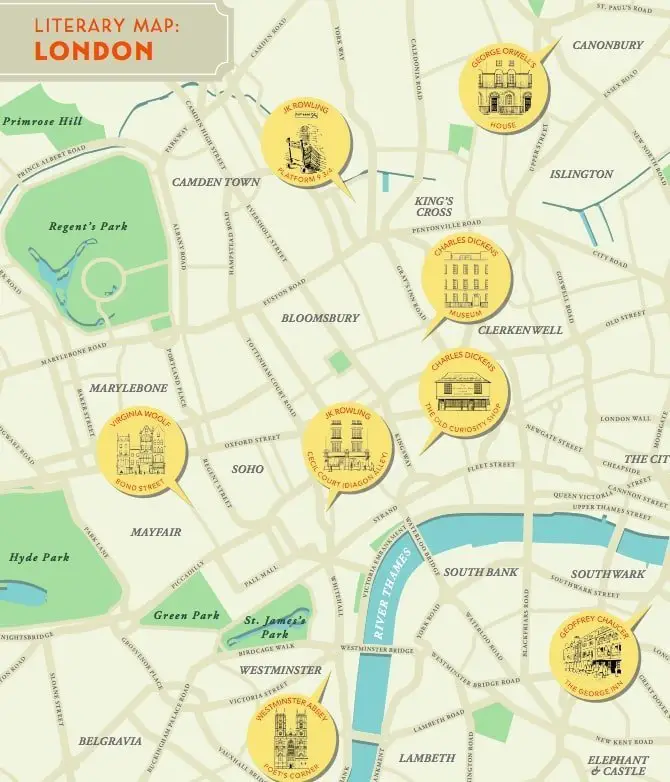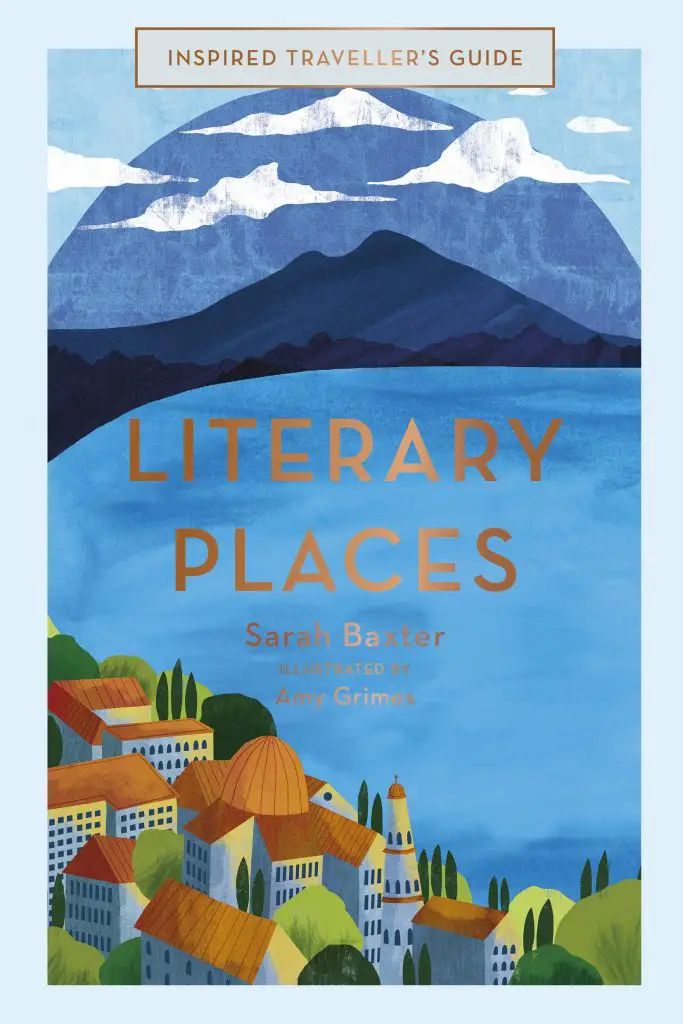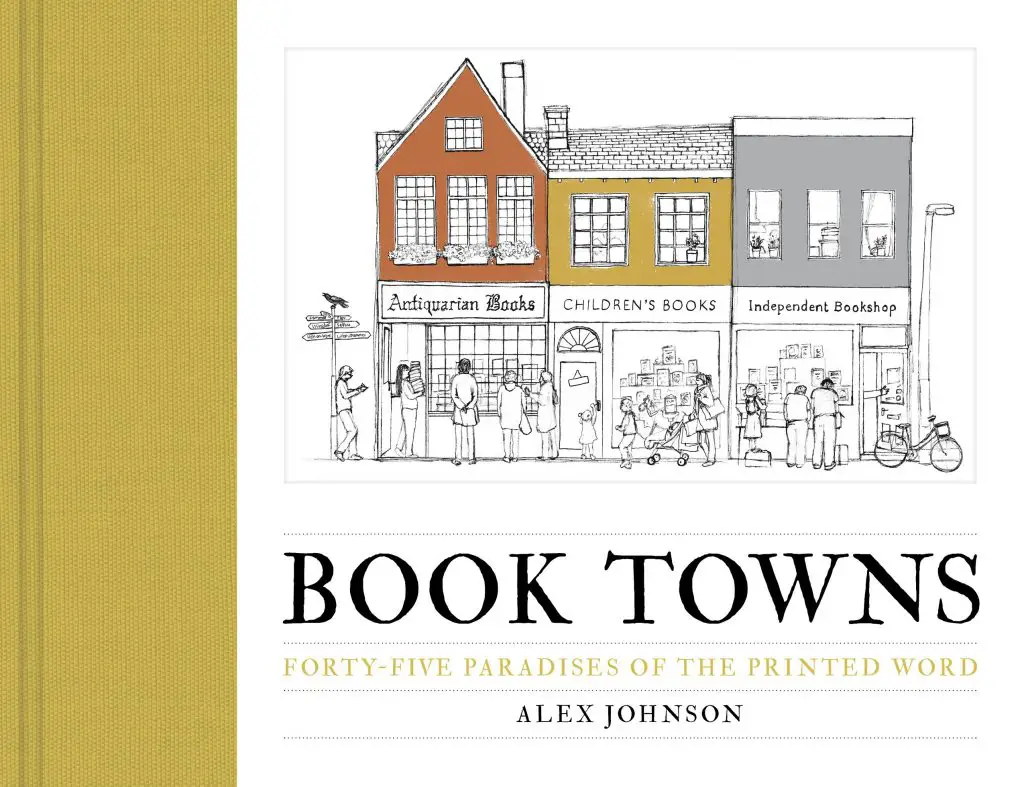Literary travel is a huge part of our life and what we do here. Visiting the real-life locations of fictional worlds or the homes of the authors whose works we love so much is one of the most exciting parts of travel for us and any other proud literary traveller.
Luckily, there are books out there to guide us to some of these places because they’re not always easy to find on your own, and the information provided is invaluable. Each of these books provides pictures, in-depth information about the location, the authors, the books themselves, and maps.
They’re also invaluable for inspiring you to visit places that you might not have considered otherwise or, even better, inspiring you to try authors you might not have read or even heard of before. Within these pages Naguib Mahfouz’s Cairo is brought to life in front of you; you can experience Yorkshire with the Bronte Sisters or Victor Hugo’s Paris.
Discover little book towns like Jimbocho in Tokyo or Hay-on-Wye in Wales, or step into your favourite dystopian worlds as created by Orwell and Huxley.
Booked: A Traveler’s Guide to Literary Locations Around the World by Richard Kreitner

This gorgeous coffee table book takes you around eighty literary locations across the world and was initially inspired by Kreitner’s own viral Atlas Obscura article, ‘The Obsessively-Detailed Map of American Literature’s Most Epic Road Trip‘ which has to be seen to be believed.
What I loved most about this book is the layout: it’s beautifully designed and wonderfully readable with luscious pictures, detailed itineraries, as well as useful websites and addresses to glean further info from. It’s an immensely passionate book and you can tell Keittner is a literary traveler at heart.
‘Why do we search out places from literature? Most obviously, it’s to see how our mental image of it, shaped by the author’s description, matches up to reality. (…) We want to see how the artist has transformed banal reality into the stuff of art.’
Out of all of these books, Booked is definitely the most useful in terms of actually planning a trip, gaining cultural and historical significance, and getting a detailed overview of the places mentioned.

You’ll also find beautiful quotes from authors bringing these places to life alongside Kreitner’s beautiful analysis. I’m particularly fond of the literary maps of certain major cities like London which I’d genuinely love to have prints of.
Just a few examples: the Alabama courthouse in To Kill a Mockingbird, Chatsworth House, the inspiration for Pemberley in Pride and Prejudice, and an overview of Murakami’s Tokyo. You’ll find as many modern authors like Zadie Smith, Stephanie Meyer, and Margaret Atwood as you will classic writers, which is a real bonus.
However, depending on whether you’re based or planning to travel around the US (or are particularly interested in US literature) could be where this book falls short for you. Over half the book is dedicated to places in the US whereas Europe, Asia, and Africa (particularly the latter two) are thin on the ground.
This is unsurprising considering the incredible amount of research that was put into the writer’s American Roadtrip; and to group together this much American Literature with this level of detail is a feat in itself. Overall, this is an ideal book for any literary traveler to dip in and out of, and to be inspired each time and a must have for fans of literary travel.
Literary Places by Sarah Baxter

Having already dipped into Sarah Baxter’s Spiritual Places, I knew what I was letting myself in for. Some of the most beautiful travel writing I’ve ever come across and stunning watercolour paintings that you just want to decorate your entire house with (luckily the artist, Amy Grimes, has her own online shop Hello Grimes – you’re welcome).
Baxter really knows how to set a scene and bring a place (and an author) to life – an unsurprising feat for the former associate editor for Wanderlust Magazine with a byline in most major UK publications. So, if you’d like to read something that will encourage better travel writing habits then Literary Places would be a good shout for that alone.
‘Greene’s Saigon is dangerous, languorous and vividly exotic. Beautiful girls cycle in white silk trousers, locals in ‘mollusc hats’ shoulder pole-slung baskets and fortune tellers squat under trees with soiled packs of cards.’
This is a relatively short book compared to Booked, coming in at just 140 pages compared to the 240 pages of the above, and it is by far the most compact here.
So, if you actually wanted to take your book with you on your travels, then this is the most convenient. It’s also worth bearing in mind that half the book is gorgeous illustrations which transport you right to the location and provide textual knowledge so it may not be ideal for readers who are looking to plan their trip solely with this book – it’s more for inspiration.
Sarah writes about twenty-five places around the world and this time the book picks a few places from each continent. A few stand-out places includes the sweaty Saigon of Greene’s The Quiet American and the luscious Kerala portrayed by Arundhati Roy in The God of Small Things.
‘Kerala oozes off its pages. It’s less a book than a deep pool of colour, fragrance, heat, history and politics stirred by love and loss, sentences rippling like backwaters.’
This book is a real cultural experience for any literary traveler; and it’s just as enjoyable as watching a theatre performance or browsing a gallery in terms of the artistic impact it has on the reader. It might be bold to call it one of the best travel books of all time, but it’s certainly one of the most enjoyable and engaging.
The Literary Worlds Series

The Literary Worlds Series is currently comprised of two large stunning hardback books: Literary Wonderlands: A Journey Through the Greatest Fictional Worlds Ever Created, and Literary Landscapes: Charting the Worlds of Classic Literature.
These are very much the kinds of books that you have on display in your home that you dip into every now and then to be transported and educated in page after page of gorgeous writing, illustrations and author information.
The first book delves into the literary and historical influences that inspire almost a hundred fictional worlds ancient classics such as Beowulf and Spenser’s The Faire Queen to Franz Kafka’s The Castle and Angela Carter’s The Bloody Chamber.
‘We may never have set foot in Victorian London, and we certainly haven’t hiked through Middle earth, but the writings of J R R Tolkien have made those places seem more real, to millions of readers, than cities we’ve actually visited.’
This book is immensely detailed and has a thorough table of contents separating each writer by time period as a literature student might study them at university, ‘The Romantics’, ‘The Modernists’ and so on. For anyone who loves to get lost in fictional worlds then this is the best it gets in terms of bringing together the wonderful escapism of the world.
What I absolutely loved about this book is that if you like a particular style of writing or world then you’ve got plenty of suggestions for similar works to delve into (with a detailed plot description), both translated and non-translated. It’s like that friend who always recommends you great books.
Similarly, Literary Landscapes groups together books in the same way in the exact same format as the above but this time is focused on real rather than imaginary worlds and provides a detailed account of the authour as well city or town and where exactly you should be heading.
There are over fifty literary worlds to explore in this thick book. I was particularly happy to find a few wonderfully detailed pages dedicated to Dylan Thomas’s Swansea (where I grew up)
‘Thomas grew up in Swansea during and immediately after The Great War. His middle-cass, comfortable childhood was founded on a landscape of dreams: of shipped-pictured bars, zinc-roofed chapels, splashed churches, salt-white houses, pink-washed pubs and yellow seashores. In that fantasy of sleep and dreams grew Milk Wood, and with that is the lulled and dumbfounded town or Llareggub.’
Something to bear in mind: Literary Landscapes, in particular, is very Europe and USA focused with some nods to Japan in terms of Memoirs of a Geisha and the writer Yukio Mishima. It covers these areas in great detail but perhaps not the choices for any literary traveler looking for more diversity.
Book Towns – Forty-Five Paradises of the Printed World

We love book towns, having both grown up next to one of the UK’s most famous, the delightful Hay-on-Wye, we’ve sought them out wherever we’ve gone discovering gems like Jimbocho in Tokyo and Bosu-Dong Book Alley in Busan, a haven of used books and charming shops.
So this book is just a wonderful purchase to anyone who loves the charm of Book Towns and book areas as much as we do. It’s a little book that you can easily carry around with you on your travels and features forty literary towns around the world.
Rather than being simply a picture, however, the information provided is incredibly detailed and relays the history and of these little spaces around the world. Quite often when a specific book district appears it’s rarely by chance so there’s as much history to learn as practical travel advice.
Book Towns is an absolute gem and a perfect for gift for the literary traveler or bookshop lover in your life. One of the best travel books of all time? Well, certainly one of the most original!
